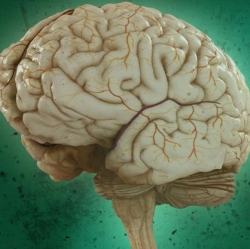
"A really important problem in brain research is understanding how different parts of the brain are functionally connected. What areas are interacting? What is the direction of communication?" says Barry Van Veen, a UW-Madison professor of electrical and computer engineering.
"We know that the brain does not function as a set of independent areas, but as a network of specialized areas that collaborate." Van Veen, along with Giulio Tononi, a UW-Madison psychiatry professor and neuroscientist, Daniela Dentico, a scientist at UW-Madison’s Waisman Center, and collaborators from the University of Liege in Belgium, published results recently in the journal NeuroImage.
Their work could lead to the development of new tools to help Tononi untangle what happens in the brain during sleep and dreaming, while Van Veen hopes to apply the study’s new methods to understand how the brain uses networks to encode short-term memory.
During imagination, the researchers found an increase in the flow of information from the parietal lobe of the brain to the occipital lobe, from a higher-order region that combines inputs from several of the senses out to a lower-order region. In contrast, visual information taken in by the eyes tends to flow from the occipital lobe — which makes up much of the brain’s visual cortex, "up" to the parietal lobe.
"There seems to be a lot in our brains and animal brains that is directional, that neural signals move in a particular direction, then stop, and start somewhere else," says. "I think this is really a new theme that had not been explored."
